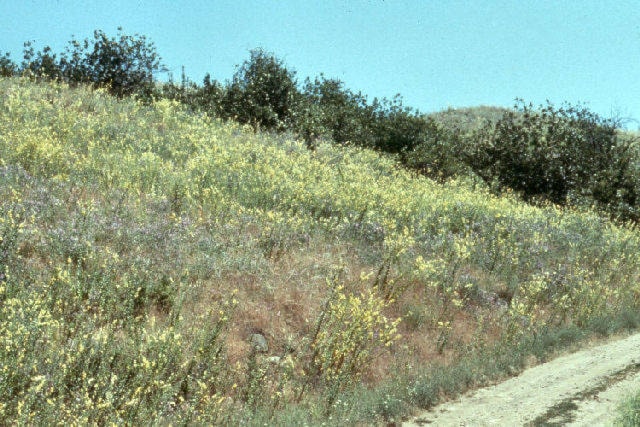The Northwest Invasive Plant Council (NWIPC) has assisted the provincial government in the release of bioagents in the Lakes District.
Biological control is a long-term, self-sustaining treatment method for managing invasive plants, using the plants’ natural enemies – mainly insects, parasites and pathogens – to reduce the invasive plant population.
Earlier this summer the NWIPC released a beetle called Larinus planus in the Lakes District, and last year they released a beetle called Mecinus janthinus.
According to Penni Adams, NWIPC’s program manager, the primary purpose of releasing these bioagents was to limit the spread of Dalmation toadflax and Canada thistle.
When it comes to choosing a location for the release, Adams said this decision is made based on the best likelihood of success.
“That means the site is not likely to be mowed or sprayed or have any other disturbance that would kill off the plants completely, which would lead to the death of the bioagents,” she explained. “We want the bioagent to survive to continue its work, but also it is costly to collect and distribute so we don’t want the sites disturbed.”
According to the Ministry of Forests, Lands, Natural Resource Operations & Rural Development, the result of these releases in the Lakes District will not be known for several years.
“Biocontrol is not like a herbicide where one treatment can result in immediate plant control or eradication,” said the ministry in a statement. “It is necessary to monitor the biocontrol agent over a couple of years to determine if the releases have led to the positive establishment of the biocontrol agents.”
This would include overwinter survival and their successful reproduction.
According to the ministry, invasive plants – typically those not native to North America – are both an ecological and an economic problem.
“They are extremely aggressive and can out-compete crops and native vegetation leading to dense, widespread areas of invasive plants. As a result, the diversity of our native plant communities is decreasing and our ecosystems are being damaged.”
RELATED: Province issues funds to combat invasive plants
“Biological control is a slow process, taking many years of testing and evaluation prior to initial release into Canada,” explained the ministry. “Many more years are required for newly released biocontrol populations in B.C. to establish, expand, and impact the target invasive plant.”
“Extensive monitoring and assessments are completed during the entire process,” added the ministry.
According the ministry, there are no immediate plans at this time to release other bioagents in the Lakes District area. However, there will likely be additional releases of available biocontrol agents in the years to come.
@flavio_nienow
flavionienow@gmail.com
Like us on Facebook and follow us on Twitter.
